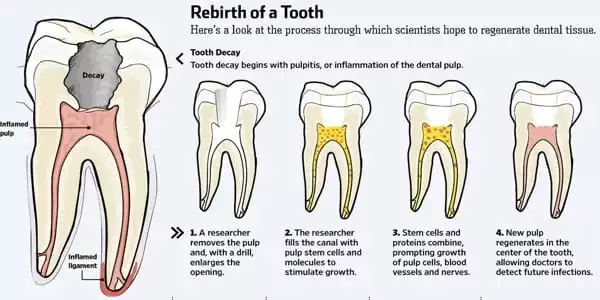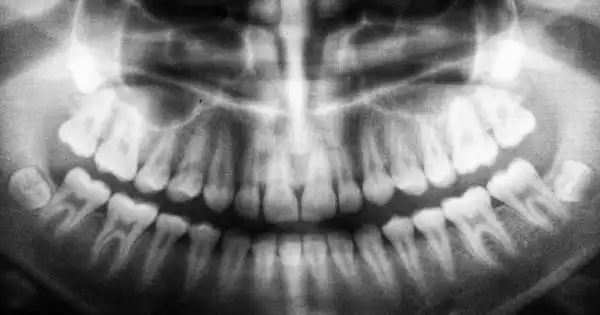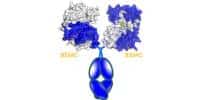It’s long been assumed that you can’t regrow teeth or tooth enamel. Recent advances in dental research, however, suggest that this may not be the case in the future. Scientists have grown tooth pulp in dogs thanks to promising work with stem cells. This advancement could allow humans to regrow parts of damaged teeth in the future, avoiding procedures such as root canals and fillings.
If preliminary research on lab animals is successful, a new experimental treatment could one day allow people to grow missing teeth. Stem cell research could lead to the prevention of tooth loss or the regeneration of teeth lost due to decay or accident. Because this research is still in its early stages, it will most likely be years, if not decades, before this breakthrough is applied to human teeth.
According to research published last month in the journal Science Advances, scientists at Japan’s Kyoto University and the University of Fukui developed a monoclonal antibody treatment that appears to trigger the body’s growth of new teeth. If future experiments prove successful, we may be able to regrow teeth lost in adulthood or those that have been missing since childhood due to congenital conditions.
A new experimental treatment could someday give people a way to grow missing teeth, if early research on lab animals holds up.
Katsu Takahashi
It’s a difficult task. According to a press release on the study, the genes that influence tooth growth have far-reaching effects on development throughout the body, and some of the first iterations of the treatment actually caused more birth defects in the lab mice before the research team ironed out all the kinks.
However, the researchers discovered that inhibiting a gene called USAG-1 increased the activity of Bone Morphogenic Protein (BMP), a molecule that determines how many teeth grow in the first place, and allowed adult mice to regrow any that were missing.

The experiment was also carried out on ferrets, which the researchers believe is significant because their teeth are far more humanlike than mouse teeth. “Ferrets are diphyodont animals with dental patterns similar to humans,” said Kyoto researcher and study lead author Katsu Takahashi in a press release. “Our next step will be to test the antibodies on other animals like pigs and dogs.”
There is still a long way to go before they reach human trials, but continued success in the upcoming trials would be a promising sign for the future of a clinical treatment that allows us to regrow our missing teeth naturally.
The newly formed periodontal fibers and cementum, the outer surface of the tooth’s root, surrounded the replanted tooth. Molars that were replanted without stem cells, on the other hand, were lost or loosely attached and resorbed. According to the researchers, this strategy can be used as a new approach for tooth replacement using custom implants or for replanting teeth lost due to trauma.
Scientists are working on methods that could one day allow humans to regrow teeth. Stem cells have been used to naturally fill cavities and promote tissue regrowth. This development is still in its early stages and will require additional research before it is made available to humans. In the meantime, you can take precautions to safeguard your teeth. Brushing at least twice a day, flossing, drinking plenty of water, and visiting your dentist on a regular basis are all recommended.
















